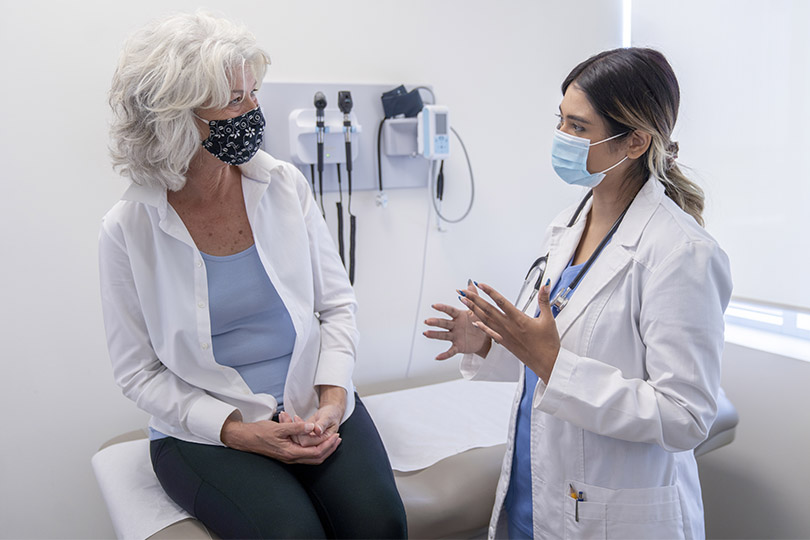Speech & Language Disorders
Appointments
Overview
Speech and language, while often used as interchangeable terms, are distinguished medically. Speech refers to our ability to use specific muscles to articulate vowels and consonants and to form words. Language is the ability to use a word or a combination of words to communicate thoughts, ideas and desires. A wide range of problems can cause impairments to both speech and language, from developmental disorders in children to damage resulting from strokes and other diseases or injuries in adults.
At Lahey Hospital & Medical Center, we diagnose and treat adults and children ages 3 and older who exhibit a wide range of speech and language disorders. Our specialists have the expertise and technology to help those with speech and language impairments overcome or live more comfortably with their conditions.
Speech Disorders
Below are the most common types of speech disorders we treat at Lahey Hospital & Medical Center:
- Alaryngeal speech is achieved following a laryngectomy through the use of an external vibratory source such as an electrolarynx or an internal vibratory source such as that created by a tracheoesophageal puncture.
- Apraxia (also known as verbal apraxia or dyspraxia) is a speech disorder in which a person has difficulty producing speech accurately and consistently for reasons other than weakness or paralysis of the muscles that control speech. Typically, people with apraxia/dyspraxia demonstrate difficulty with the motor-planning component of speech.
- Articulation disorders affecting speech sound production are characterized by the substitution, omission or distortion of sounds.
- Dysarthria is the imperfect articulation of speech caused by disturbances of muscular control that result from damage to the brain or nerves.
- Stuttering is a speech disorder in which the normal flow of speech is interrupted by frequent repetitions or prolongations of speech sounds, syllables or words, or by an individual’s inability to start a word. These interruptions may be accompanied by blinks, tremors of the lips or jaw, or other signs of effort.
Language Disorders
Language disorders may result from or be associated with a number of conditions. Among the most common, all of which we treat at Lahey Hospital & Medical Center, are the following:
- Aphasia, or the loss of the ability to speak or write as well as to understand spoken or written language, resulting from disease or injury to the brain. Aphasia usually occurs suddenly, often as the result of a stroke or head injury, but it may also develop slowly, as in the case of a brain tumor or dementia. Aphasia may present itself with speech disorders such as dysarthria or apraxia, which also result from brain damage.
- Attention Deficit Disorder (ADD) is the inability to control behavior or focus on a given task, accompanied by inattention, hyperactivity or impulsivity.
- Autism, a neurological disorder that usually begins in early childhood and persists throughout adulthood, affects three critical areas of development: communication, social interaction and play. Autism is the most common of a group of conditions called pervasive developmental disorders (PDDs). The first signs of autism are usually noticed by the age of 3. Autistic individuals live a normal life span, but most require lifelong care and supervision.
- Developmental delays refer to delays in reaching certain milestones in early childhood development.
- Traumatic Brain Injury (TBI) is sudden physical damage to the brain. The major causes of head trauma include motor vehicle accidents, falls, sports injuries, violent crimes and child abuse. The specific physical, behavioral or mental changes that may result from head trauma are dependent upon the areas of the brain that are injured. The frontal and temporal lobes of the brain, which house the major speech and language areas, are often affected by TBI.

